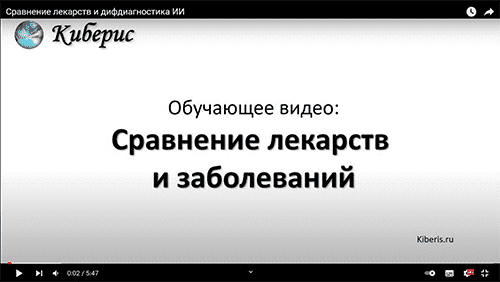Distinctive symptoms
Register , to see more distinctive signs of diseases and studies56% —
Register , to see more distinctive signs of diseases and studies— 100%
worms in the feces
54%
—
non-compact myocardium of the left ventricle —
79%
shortness of breath when lifting
51%
—
urinary tract infection in children —
75%
helminths
43%
—
decrease in creatine kinase —
75%
shortness of breath when climbing stairs
41%
—
myopathy
14%
86%
cardiomyopathy in children
34%
—
oppenheim syndrome —
64%
heart failure in children
34%
—
ganglioneuritis —
64%
tingling in the heart area
28%
—
congenital myopathies —
64%
arrhythmia
28%
—
congenital neutropenia —
63%
asleep shortness of breath lying down
27%
—
plum belly syndrome —
63%
myocarditis
26%
—
lop - eared —
62%
burning pain in the heart area
26%
—
pyoderma in a child —
62%
burning in the chest on the left
26%
—
cardiomyopathy
24%
85%
pain chest
25%
—
the desire to be busy —
61%
left-sided symptoms
25%
—
barrett 's syndrome —
61%
paroxysmal tachycardia in children
24%
—
absolute neutropenia —
59%
congenital heart
23%
—
round face —
58%
foam from the mouth
22%
—
sucks the breast —
58%
severe shortness of breath
22%
—
lingering pneumonia —
58%
cardiac asthma
22%
—
inflammatory myopathy —
57%
non-rheumatic carditis in children
22%
—
likes to walk —
55%
pain in the left chest
22%
—
weakness in the shoulder —
54%
shortness of breath at rest
22%
—
babies rashes —
54%
shortness of breath when walking
22%
—
weakness in the hip —
54%
compressing pains in the heart
21%
—
he walks badly —
53%
desire for rest
21%
—
better from movement —
53%
CHD
21%
—
reduction of LDL —
52%
patient is motionless
21%
—
bronchitis in children —
52%
extrasystole in children
21%
—
high emotional sensitivity —
52%
sniffles
21%
—
purulent bronchitis —
51%
burning sensation in the heart area
20%
—
tired when walking —
51%
tingling in the chest
20%
—
prolonged bronchitis —
51%
supraventricular extrasystole
20%
—
weakness in the arms and legs —
50%
onset of illness
19%
—
can't walk —
50%
ventricular extrasystole
19%
—
big ears —
50%
enlargement of the heart
19%
—
fatigue from children —
50%
fainting
19%
—
lower cholesterol —
50%
swelling
19%
—
weakness of the muscles of the hands —
49%
rheumocarditis
19%
—
leg weakness walking —
49%
swelling of the legs
19%
—
heart dysfunction
25%
74%
pain in the heart
19%
—
fatigue in the legs —
48%
effects of puberty
19%
—
fruits when running worse —
48%
chronic heart failure
19%
—
pyoderma —
48%
feeling of weakness in the heart
19%
—
pneumonia in children —
48%
tingling
19%
—
weakness in the leg muscles —
47%
suffocation
19%
—
pneumonia with bronchitis —
47%
acute rheumatic fever
19%
—
weak breathing —
47%
desire to sit
19%
—
infection genitourinary —
46%
chest pressure on the left
19%
—
weakness in the hands —
46%
breathing hoarse
19%
—
purulent rashes on the skin —
45%
tachycardia in children
18%
—
porous skin —
45%
periodic dizziness
18%
—
viral pneumonia —
45%
pacemaker
18%
—
muscle fatigue —
45%
interruptions in the work of the heart
18%
—
skin problems —
44%
disorders of consciousness
18%
—
rapid growth —
44%
burning in the chest
18%
—
hypoproteinemia —
44%
arrhythmia in children
18%
—
chronic bronchitis unspecified —
43%
fainting in childhood
18%
—
smart baby —
43%
shortness of breath worse lying down
18%
—
Chronical bronchitis —
43%
vascular damage
17%
—
hypoglycemia —
42%
breathes through the mouth
17%
—
acute bronchitis —
42%
hypoxia
17%
—
bacterial pneumonia —
42%
minimum physical load
17%
—
rash pustules —
42%
supraventricular tachycardia
17%
—
blood diseases
21%
63%
listlessness drowsiness
17%
—
bronchitis —
41%
sudden weakness
17%
—
type of breathing chest —
41%
extrasystole
17%
—
hypotrophy —
41%
wolf-parkinson-white syndrome
17%
—
large child —
41%
ventricular paroxysmal tachycardia
17%
—
impressionability —
40%
dizziness sudden
17%
—
childhood diseases
24%
64%
acute left ventricular failure
17%
—
muscle damage —
40%
slow walking
17%
—
sensations in the hands —
40%
interruptions in the heart
16%
—
hard to walk
19%
58%
periodic fainting
16%
—
frequent colds —
39%
from left to right
16%
—
constant weakness —
39%
atrioventricular block
16%
—
2 children —
39%
periodic weakness
16%
—
protein c deficiency —
39%
presses
16%
—
suppuration of the skin —
38%
dizziness attacks
16%
—
dependence on the doctor —
37%
impaired pericardial function
16%
—
psychologist —
37%
systemic vasculitis
16%
—
family man —
37%
weakness after illness
16%
—
pneumonia —
37%
mitochondrial myopathy
16%
—
drug allergy —
37%
feeling of lack of air
16%
—
running away desire
19%
56%
improvement from physical exertion
15%
—
thin —
37%
decreased calcium
15%
—
muscle weakness —
36%
erythrocytosis
15%
—
lags behind in the development —
36%
dizziness weakness
15%
—
dilated cardiomyopathy
18%
53%
tachycardia attacks
15%
—
angioplasty
21%
56%
feels the heart
15%
—
subacute condition —
35%
weakness in the heart
15%
—
increased sensitivity —
35%
temperature with chills
15%
—
emotional —
34%
parkinson's disease
15%
—
rejection of the chest
16%
50%
supraventricular arrhythmia
15%
—
allergy —
34%
worse at rest
15%
—
pregnancy —
33%
to breathe hard
15%
—
consequences of infection —
33%
angina attack
15%
—
hypertrophic cardiomyopathy
17%
50%
pericarditis
15%
—
restrictive cardiomyopathy
16%
49%
swelling of the extremities
15%
—
myocardial dysfunction
15%
47%
shortness of breath during physical exertion
15%
—
there are no complaints —
32%
acute heart failure
15%
—
oncology —
31%

